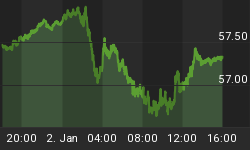Generation Y, also known as millennials, are all about their organic, whole foods, environmentally friendly products, fitness clubs, and standing desks. In fact, they’re the primary drivers of the $174 billion US wellness market. Surprisingly, though, wellness isn’t translating into actual good health: Millennials, studies now say, are less healthy than their Gen-X predecessors.
And bear in mind that when the previous generation was growing up, houses had lead paint, smoking was allowed everywhere and ‘organic’ food was served only at a farmer’s table.
Last month, a study conducted by Blue Cross Blue Shield reported some rather worrying facts regarding the generation’s health. Millennials, the study said, could feasibly see mortality rates climb up by more than 40% compared to the previous generation at the same age unless they change.
The bottom line of the study is that the millennial workforce is lonely, burned out and depressed, and the mental state is taking its toll even more than lead paint managed.
When compared to the national population, millennials are more affected by behavioral health conditions. Major depression, hyperactivity, and type 2 diabetes had the largest growth in prevalence for millennials.
Rates of major depression have increased by 31%. Rates of psychotic conditions have increased by 15%, and rates of substance use have risen 10%. Research has found that they are likely driven in part by stressors including a divisive political and social climate, financial concerns and social media.
BCBS study reported that millennials have seen nearly a 50% increase in major depression diagnoses since 2013. But one in five fails to seek treatment, simply because they can’t afford it.
In total, two million commercially insured Americans diagnosed with major depression aren't seeking treatment. Compared to the 1960s, healthcare personal insurance has increased nine-fold from $160 to some $10,000. Healthcare costs are expected to increase to $14,944 in 2023.
Related: Trump Prepares For Another Key Tariff Decision
A recent study published in the American Journal of Public Health unveiled that 66% of all bankruptcies are tied to medical issues. An estimated 530,000 American families turn to bankruptcy each year because of medical issues and bills.
Other reasons for the bankruptcy include unaffordable mortgages or foreclosure at 45%, followed by spending or living beyond one’s means with 44%. It’s another reason for depression, creating a circular situation that feeds into poor health and healthcare expenses.
Now, healthcare and living beyond one’s means could have a negative effect on other sectors of the U.S. economy.
There are some 80 million millennials in the U.S., and they represent our most educated generation. In the coming years, they will continue to be a major force in the economy, especially as they mature.
However, according to the Blue Cross Blue Shield estimate, millennials’ lower health levels could cost them more than $4,500 per year. That is about the same amount they spend on apparel and entertainment, from where it is likely to be diverted. That means those sectors will suffer along with the burgeoning American mental health crisis.
By Josh Owens for Safehaven.com
More Top Reads From Safehaven.com:

















